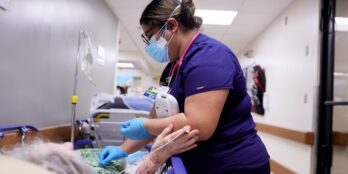
Transitioning to Post-Acute Care: The Patient Journey
 4 min
4 min
For a sick patient, a change in care settings from acute to post-acute is one of the most vulnerable parts of their care journey. In fact, research shows that 40% of patients over 65 have medication errors after leaving the hospital and 18% of Medicare patients discharged from a hospital were readmitted within the first 30 days. We know the process is broken, and we’re here to help you fix it by identifying exactly where it is breaking down and showing you how the right technology can help.
Meet Jane
Jane is an 85-year-old woman with kidney failure, resulting in an ER diagnosis of dialysis infection and co-morbidities dementia and hypertension. Jane needs to transition from acute to post-acute, but unfortunately, Jane and her SNF encounter a few setbacks in her journey.
Without a streamlined process, Jane arrives at the SNF without a discharge summary or proper documentation of her medical history. As a result, SNF staff are unaware of important details around previous care and must build her care plan by combing through the limited documentation they do have available. This can result in items being missed and put Jane’s care in jeopardy.
Understandably, Jane’s family then gets upset that their loved one isn’t receiving the pain medication she needs, or worse, a critical diagnosis is missed. And to top it all off, without having access to the proper information, her SNF admits Jane without proper insurance coverage which negative impacts their census and bottom line.
How to solve issues with streamlined processes
Thankfully for Jane, and her SNF, all of these issues can be greatly improved with proper transitions of care in place. With streamlined processes:
- Jane’s assigned nurse will know her background and immediately get started on a care plan, completing a baseline plan within the first 48 hours.
- Jane will arrive with a hard copy of pre-admission history, SNF staff already has access to her history and completes a successful transfer.
- The SNF nurse will receive a full list of medication prior to Jane’s arrival and be prepared to immediately write orders to the pharmacy.
- The SNF will understand the full financial picture prior to arrival to Jane’s arrival.
The right technology can help
The wellbeing and care of patients is your number one concern. Streamlining transitions of care will not only ensure your patients receive the best care possible, but it is also good business for your SNF. It’s important for care providers to master their care transition process to drive better outcomes, earn more referrals, and maintain their target margin.
That’s why we’ve identifiedfour ways SNFs can overcome gaps in transitions with the right technology.
- Improve coordination with other providers in your network with data sharing
- Gain full visibility into your patient prior to admission
- Understand the full financial impact of your potential residents
- Form strong relationships with network partners by proving your outcomes
May 5, 2021






